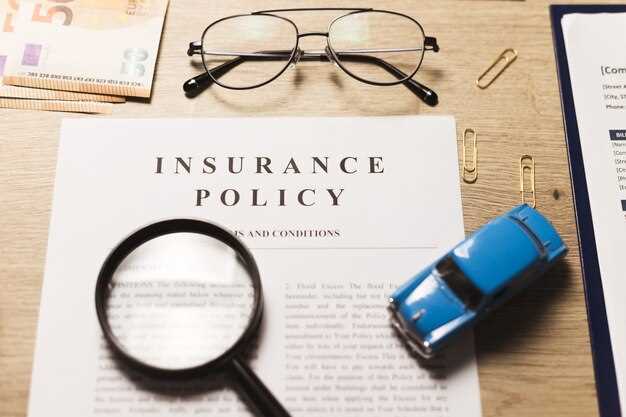What is gap insurance and do you need it?


In the complex landscape of finance, individuals often seek various forms of insurance to safeguard their assets and investments. One often overlooked type is gap insurance, which plays a crucial role in providing adequate protection for vehicle owners. As the name suggests, gap insurance is designed to cover the difference, or ‘gap’, between what you owe on your car and its actual cash value in the event of a total loss.
Many people are unaware that standard auto insurance may not fully cover the amount owed on a financed or leased vehicle, especially after depreciation sets in. This discrepancy can result in a significant financial burden if an accident occurs. Understanding the need for gap insurance is essential for anyone looking to drive off the lot with a new vehicle, as it can provide peace of mind and financial security during unforeseen circumstances.
As we delve deeper into this topic, we will explore key concepts related to gap insurance, including its benefits, potential drawbacks, and the situations in which it is most necessary. This knowledge will empower consumers to make informed decisions about their financial protection strategies and ensure that they are adequately covered in their time of need.
What is Gap Insurance and How Does It Work?

Gap insurance is a type of coverage designed to protect vehicle owners from financial loss in the event of a total loss due to theft or an accident. When a car is financed or leased, its market value often decreases faster than the remaining balance on the loan or lease. This difference is referred to as the “gap.” In such situations, traditional insurance typically covers the current market value of the vehicle, which may be less than what the owner still owes. Gap insurance fills this financial gap, ensuring that the owner does not have to pay out of pocket to settle the loan balance.
When a covered vehicle is declared a total loss, the primary insurance provider assesses the car’s actual cash value at the time of the loss. If this amount is less than the amount owed on the loan or lease, gap insurance will pay the difference, providing the necessary financial protection. It is particularly beneficial for new car buyers or those who have put little money down, as these owners are more likely to owe more than their vehicle’s worth shortly after purchase.
To obtain gap insurance, vehicle owners typically purchase it through their auto insurer or through the dealership when acquiring the vehicle. The cost varies based on factors such as the vehicle’s value and the insurer’s rates. Although gap insurance is not mandatory, it is a wise investment for individuals looking to safeguard against unexpected financial burdens associated with their car loans or leases.
Who Should Consider Investing in Gap Insurance?
Gap insurance is an essential financial protection for specific individuals who find themselves in unique circumstances. Primarily, it is beneficial for those who have recently purchased a new or leased vehicle. Since new cars depreciate rapidly, the financing amount often exceeds the actual cash value shortly after the purchase. In such cases, gap insurance covers the difference, ensuring that the owner doesn’t face a significant financial burden in the event of a total loss.
Individuals financing their vehicles with little or no down payment should also consider gap insurance. When minimal initial investment is made, the loan amount remains high relative to the vehicle’s depreciating value. Protecting against this financial gap can save owners from substantial out-of-pocket expenses if their vehicle is damaged beyond repair.
Leaseholders are another group that should invest in gap insurance. Most leasing agreements require drivers to cover the difference between the car’s value and the amount owed on the lease after an accident. This situation makes gap insurance a practical choice for those who want to avoid unexpected costs and ensure comprehensive protection.
Lastly, anyone who drives a vehicle that is more likely to depreciate quickly, such as luxury or high-end cars, should consider this type of coverage. The faster a car loses value, the more useful gap insurance becomes, as it can relieve the financial stress associated with rapid devaluation.
How to Choose the Right Gap Insurance Policy for Your Needs?

Selecting the appropriate gap insurance policy requires careful consideration of various factors that directly impact your financial security. Start by assessing the value of your vehicle in relation to the outstanding balance on your auto loan. Gap insurance is designed to cover the difference between these two figures, so understanding your car’s depreciation rate is crucial.
Next, evaluate the coverage options provided by different insurance providers. Policies can vary significantly in terms of what is covered and any exclusions that may apply. It’s essential to read the fine print and ask questions about specifics such as total loss coverage, rental car reimbursement, and any other features that could benefit you in the event of an accident.
Compare quotes from multiple insurers to find a policy that fits your budget without sacrificing essential coverage. Consider the premium costs in relation to the potential financial protection offered by the gap insurance policy. Sometimes, paying a slightly higher premium may result in better coverage, which could save you money in the long run.
Another important aspect is to check the insurer’s reputation and financial stability. Research customer reviews and ratings, along with the company’s track record in paying claims. A reliable insurer will provide peace of mind knowing that you are supported by a strong financial institution in case of an unforeseen event.
Lastly, consider your personal circumstances, such as your driving habits and the length of your loan. If you plan on upgrading to a new vehicle soon, gap insurance may not be necessary. However, if you are financing a car with a long-term loan, ensuring you have the right level of coverage could be a wise financial decision.



